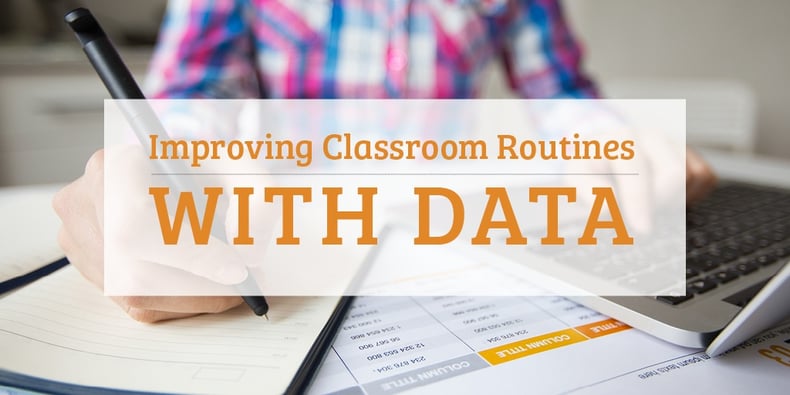
At times, making changes in our teaching methods can be very hard. The way we teach is a very personal matter, as teachers (should) bring their personality into the classroom to help connect with students. Because we want teachers to teach from their heart, to change our teaching methods means we need to change our mindset, our beliefs, or even what we are comfortable doing and saying in our classroom. Even more so than instructional practices, classroom management is one of these areas where change can be especially hard.
Part of this is because all teachers have different comfort levels with certain behaviors. What one teacher finds stressful may not bother the next. One teacher may love and embrace controlled chaos, while another teacher is more comfortable with high structure. As a teacher reflects on each of these areas, he or she will need to determine first if this is an area that both needs improvement and whether or not the teacher is willing to improve.
Making a Positive Change
So, if a teacher has a growth mindset and is willing to improve their teaching practices, where do they start? As I stated earlier, it can be a hard area to reflect upon because it is so personal. I feel the key to bringing about successful change is to look at the classroom as objectively as possible—this happens by using quantifiable data to help guide the process.
If you don’t know where to start, here are some ways to get the ball rolling to begin the reflection process, along with methods for collecting data to improve. When I talk to teachers about this, I try to focus on increasing instructional time. This is really the best way to maximize what we do, giving students more time to learn and teachers more time to teach.
- Whole-class management: You can better manage your classroom by reflecting on the routines, procedures, whole-class incentives, and positive supports that are currently in place for students, making improvements as needed.
- Time transitions: Transitions can be time-wasters—and more often than not, teachers don’t even realize it. This can be an easy data point for teachers to use to reflect, as well as a great way to incorporate students into the process. Simply assign a student to be the “classroom timer” for the day. Have them start and stop the timer for each transition and record it. The teacher/class can total up the time, then set goals to improve if needed.
- Track interactions: This one can be harder to track, but is probably more important because it directly affects students. Take data on which students you call on to answer questions, as well as those who you interact with the most and the least. Once this data is in hand, take a look at the ratios of boys vs. girls, special-needs students vs. students who don’t have special needs, and front of the room vs. back of the room. This data can be collected with a class list and a tally sheet, but is even better if someone not connected with the classroom tallies the interactions so the teacher can focus on teaching and not on collecting data.
- Tally minutes out of the classroom: How much instructional time is being lost from trips to the nurse’s office or restroom breaks? This is another easy area to collect data if the procedure of a sign-out sheet is in place—and if not, it is simple to implement. Have students sign their name, the time they left, and when they re-entered the classroom. Too often, students try to leave the classroom to avoid something, usually either completing work or other students. This avoidance results in lost instructional time, but also can be a signal on an individual level that the student is internalizing some larger issue in their life. The teacher can tally the time for the day or week, then set goals as a class to minimize the lost time.
- Up, down, and around the room: Just like the students who are getting out of the room to avoid things, there are kids within the room who will do the same thing. If the math paper is hard, they will need to sharpen their pencil, get a tissue, look out the window, and then go across the room to throw the tissue away. Teachers are usually all over this, but it is another habit to monitor or at least reflect upon. By tallying the number of tissues grabbed or number of pencils sharpened in a day, the teacher can reflect on procedures to lessen this movement.
- Taking the classroom pulse: By taking quick polls within your classroom, you can quickly get a feel for whether or not your students understand a topic. If not, you can decide if that topic needs to be covered more by you in that moment, or if it would be better to break the students into groups to work at different levels of review/progress. This will help with instructional time being more effective and, in turn, more efficient and valuable.
By using data to find a baseline on these classroom routines, teachers can determine if instructional time can be improved and track progress toward getting better. How have you improved upon your classroom routines? Let us know in the comments below!


